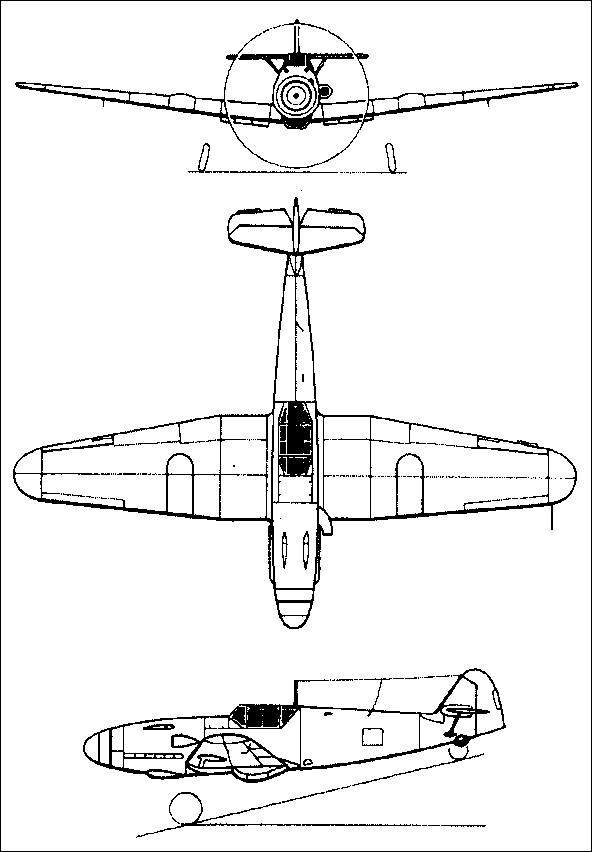| The Bf 109 was the Luftwaffe's standard fighter throughout WWII, and the production of the Bf 109 was larger than that of any other fighter. It was a quite revolutionary design, the smallest aircraft that could be built around a powerful engine. Advantages were good performance and handling, and a simple construction; disadvantages were restricted vision, bad landing characteristics, and the inability to carry heavy armament without adverse affects on handling. The E was one of the best fighters in the world, on a par with the Spitfire; the F was a fine fighter with limited armament; the G suffered from deteriorated handling. Projects to replace the 109 all failed. Approx. 35000 built |

















